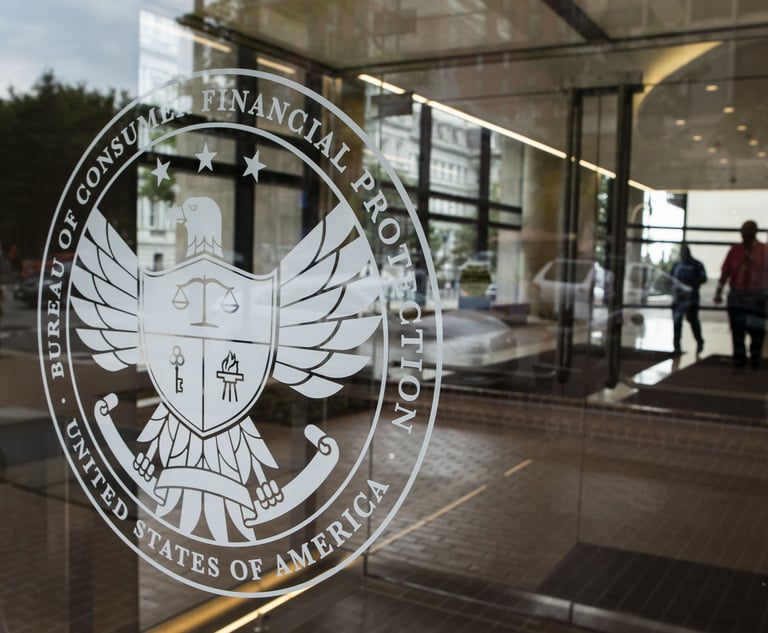Cyber Ransoms: Mr. Smith Attacks HBO's Loot Train
Thomas G. Rohback and Brooke Oppenheimer write: The recent cyber-attack on HBO should be a wakeup call to both businesses and insurers. While the amount sought by the hackers called "Mr. Smith"—roughly $6 million in bitcoin—is not a huge amount for HBO, it is significantly more than the amounts that have typically been demanded in recent cyber extortion demands.
August 29, 2017 at 12:00 AM
15 minute read
The recent cyber-attack on HBO should be a wakeup call to both businesses and insurers. While the amount sought by the hackers called “Mr. Smith”—roughly $6 million in bitcoin—is not a huge amount for HBO, it is significantly more than the amounts that have typically been demanded in recent cyber extortion demands. Over the last two years, the average ransom amount demanded in ransomware attacks was only between $100 and $2,000. Accordingly, approximately 70 percent of all ransomware demands have been paid. Datto, “Datto's State of the Channel Ransomware Report” (2016).
While underwriting for many aspects of cyber insurance faces significant challenges—particularly since many data breach cases and claims thus far have foundered on the lack of standing or actual damages where personally identifiable information (PII) has been accessed but not used—ransomware attacks have been substantially under-reported. Id. Ransomware attacks involve introducing a software into a company's computer system that allows data to be temporarily encrypted (and made unusable) until a ransom demand is paid. Absent faulty technology (or fake ransomware), the data is typically only exfiltrated, deleted or destroyed if the ransom demand is not met.
In the past two years, the volume of ransomware-infected email has increased by 6,000 percent resulting in more than 1.5 million systems being infected with ransomware. Limor Kessem, “Ransomware: How Consumers and businesses value their data,” IBM Security (Dec. 14, 2016). But the relatively modest ransom prices have been quickly paid, thereby making this payment appear more like a cost of doing business rather than an event requiring an insurance claim to be filed.
This content has been archived. It is available through our partners, LexisNexis® and Bloomberg Law.
To view this content, please continue to their sites.
Not a Lexis Subscriber?
Subscribe Now
Not a Bloomberg Law Subscriber?
Subscribe Now
NOT FOR REPRINT
© 2025 ALM Global, LLC, All Rights Reserved. Request academic re-use from www.copyright.com. All other uses, submit a request to [email protected]. For more information visit Asset & Logo Licensing.
You Might Like
View All
NYAG’s Enforcement of Mandated Cybersecurity Safeguards Sends Expensive Shock Waves through Varying Industries
9 minute read

Trending Stories
- 1States Accuse Trump of Thwarting Court's Funding Restoration Order
- 2Microsoft Becomes Latest Tech Company to Face Claims of Stealing Marketing Commissions From Influencers
- 3Coral Gables Attorney Busted for Stalking Lawyer
- 4Trump's DOJ Delays Releasing Jan. 6 FBI Agents List Under Consent Order
- 5Securities Report Says That 2024 Settlements Passed a Total of $5.2B
Who Got The Work
J. Brugh Lower of Gibbons has entered an appearance for industrial equipment supplier Devco Corporation in a pending trademark infringement lawsuit. The suit, accusing the defendant of selling knock-off Graco products, was filed Dec. 18 in New Jersey District Court by Rivkin Radler on behalf of Graco Inc. and Graco Minnesota. The case, assigned to U.S. District Judge Zahid N. Quraishi, is 3:24-cv-11294, Graco Inc. et al v. Devco Corporation.
Who Got The Work
Rebecca Maller-Stein and Kent A. Yalowitz of Arnold & Porter Kaye Scholer have entered their appearances for Hanaco Venture Capital and its executives, Lior Prosor and David Frankel, in a pending securities lawsuit. The action, filed on Dec. 24 in New York Southern District Court by Zell, Aron & Co. on behalf of Goldeneye Advisors, accuses the defendants of negligently and fraudulently managing the plaintiff's $1 million investment. The case, assigned to U.S. District Judge Vernon S. Broderick, is 1:24-cv-09918, Goldeneye Advisors, LLC v. Hanaco Venture Capital, Ltd. et al.
Who Got The Work
Attorneys from A&O Shearman has stepped in as defense counsel for Toronto-Dominion Bank and other defendants in a pending securities class action. The suit, filed Dec. 11 in New York Southern District Court by Bleichmar Fonti & Auld, accuses the defendants of concealing the bank's 'pervasive' deficiencies in regards to its compliance with the Bank Secrecy Act and the quality of its anti-money laundering controls. The case, assigned to U.S. District Judge Arun Subramanian, is 1:24-cv-09445, Gonzalez v. The Toronto-Dominion Bank et al.
Who Got The Work
Crown Castle International, a Pennsylvania company providing shared communications infrastructure, has turned to Luke D. Wolf of Gordon Rees Scully Mansukhani to fend off a pending breach-of-contract lawsuit. The court action, filed Nov. 25 in Michigan Eastern District Court by Hooper Hathaway PC on behalf of The Town Residences LLC, accuses Crown Castle of failing to transfer approximately $30,000 in utility payments from T-Mobile in breach of a roof-top lease and assignment agreement. The case, assigned to U.S. District Judge Susan K. Declercq, is 2:24-cv-13131, The Town Residences LLC v. T-Mobile US, Inc. et al.
Who Got The Work
Wilfred P. Coronato and Daniel M. Schwartz of McCarter & English have stepped in as defense counsel to Electrolux Home Products Inc. in a pending product liability lawsuit. The court action, filed Nov. 26 in New York Eastern District Court by Poulos Lopiccolo PC and Nagel Rice LLP on behalf of David Stern, alleges that the defendant's refrigerators’ drawers and shelving repeatedly break and fall apart within months after purchase. The case, assigned to U.S. District Judge Joan M. Azrack, is 2:24-cv-08204, Stern v. Electrolux Home Products, Inc.
Featured Firms
Law Offices of Gary Martin Hays & Associates, P.C.
(470) 294-1674
Law Offices of Mark E. Salomone
(857) 444-6468
Smith & Hassler
(713) 739-1250







